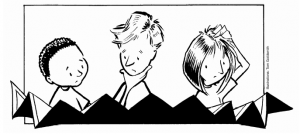Map Interpretation and the Language of Maps

Originally appears in the Spring 2010 issue
In this modern day of GPS, satellite images and video streaming, it might seem that the ability to interpret paper maps has become an obsolete skill. In environmental education, however, there is still much to be learned from maps and mapping. Producing simple sketch maps and reading printed maps, such as highway or topographic maps, can help students connect to the natural world in a variety of ways. Maps can be used to define an area of study and identify components of it, to locate a trail or to plan a restoration project. Historic maps can bring to life stories of exploration and adventure and reveal changes in landscapes over time. Maps are necessary components of one of the core activities of outdoor education — orienteering. And the best thing about maps is that they still work when the battery goes dead on your GPS!
This content is restricted to subscribers only.
If you are not yet a subscriber, please consider taking out a subscription here.
If you are an existing subscriber, kindly log in or contact us at info@greenteacher.com for more information.





